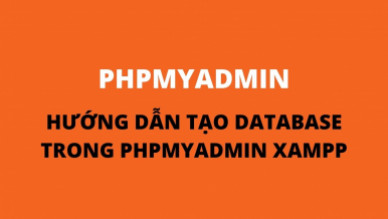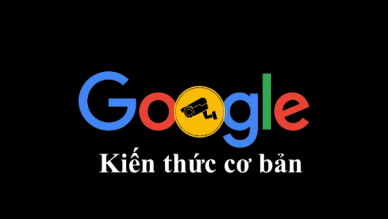OnPage SEO involves making minor adjustments on individual pages of a website. Although these changes are small, they can significantly impact the overall user experience of the website and importantly, help search engines understand and display content more accurately. For a deeper understanding of the elements that need adjusting in OnPage SEO, follow the article below.
I. Check if Your Website is on Google
To check if your website is on Google, use the site: operator. If results return, it means your website has been indexed by Google, and vice versa.
There could be several reasons your website hasn’t been indexed:
- Your website is new
- Your website has duplicate content with another site
- Your website's design makes it difficult for Googlebot to collect data
- Your website is blocking Googlebot
II. Optimize to Help Google Understand Your Website
The process of OnPage SEO is how to make your website understood by Google as best as possible. The higher the OnPage SEO score, the faster you can climb the rankings. Below are the factors to optimize for Google to understand your website.
1. Standard and Unique Website Titles
Your website needs to add title tags to help search engines and users know the topic of a specific page. The title tag should be placed inside the head tag and note that the title should be unique for each specific page.
The syntax of the title tag is as follows:
<title>Title tag content</title>
2. Use Meta Description Tags
Meta description tags provide Google with more information about your site. Like the title tag, the meta description tag is also located within the head tag.
The syntax for the meta description tag is as follows:
<meta name="description" content="Site description">
3. Add Structured Data
Structured data is a standard format for providing information about a page and classifying page content. Therefore, adding structured data code to your website helps search engines better understand your web page content, potentially displaying your content more prominently and usefully in the SERP (Search Engine Results Page).
Most structured data on search engines use code from schema.org, but it's recommended to refer to Google's official site rather than relying on schema.org documentation because there are many properties on schema.org that Google does not require. Although these properties might be useful for other search engines.
To qualify for display in Google's search results page, the following principles must be ensured.
3.1 Technical principles:
Format
Recommended format is JSON-LD, but you can still use Microdata and RDFa formats.
Access
Do not block Googlebot from accessing pages containing your structured data using robots.txt files, noindex tags, or any means.
3.2 Quality principles
Content
- The webpage content must be of quality
- Provide accurate and matching information, outdated information may not be displayed in many formats anymore.
- Offer original content, not copied from other websites.
- Do not markup content inaccessible to users. If you mark up JSON-LD describing a movie, the HTML content must also describe that exact movie.
- Do not markup irrelevant content to the website.
- Do not markup deceptive or misleading content for users.
- Content must not promote sexual violence, pedophilia, bestiality, violent acts, and malicious activities.
- Do not markup content related to illegal activities or products, services causing harm to others.
Relevance
Your website must contain content that matches the structured data marked up. For instance, a cooking site should not markup content about nail art,...
Completeness
When marking up content, you must declare all required properties; missing required properties disqualify the content from appearing in many result formats on the SERP.
For optional properties, adding them can improve the display quality for users. For example, users would prefer job postings that clearly state the salary over those that do not.
Position
Place structured data with content that matches each specific page; if multiple pages have the same content, the same structured data should be placed as well.
Specificity
Use the correct type names and property names as defined by schema.org to mark up your website.
Images
When declaring an image address as a property, the image should correspond with the page topic. The image URL must allow Google to crawl and index it.
Multiple Items on a Page
Multiple items on a page mean that the page contains different types of data. For instance, a page may contain a cooking recipe, a how-to video, and breadcrumb data (a hierarchical collection of links) that make it easier for users to navigate. The entire information on the page can be marked with structured data to help search engines understand more clearly and help display that page in more formats on the SERP.
Google's search engine can understand multiple items on a page, whether you nest items together or specify each item separately:
- Nested form: You specify a main item and include other items within that main item.
- Separate items form: There are multiple separate items on the same page.
4. Organize a Website's Hierarchy System
How Search Engines Use URLs
Each content piece needs its URL so search engines can gather information and index it. For instance, content translated into multiple languages should have a separate URL for each language to display the correct results for each region.
According to Google, every website should use https://, meaning you should install an SSL certificate for your website's address. Google differentiates www versions from non-www versions so when adding your site to Google Search Console, include all four versions: https, http, with www, and without www.
Google also distinguishes between uppercase and lowercase in URLs, filenames, and query strings that define content.
For URLs leading to the homepage, the trailing slash / is optional, meaning https://example.com/ and https://example.com mean the same. However, for other URLs and filenames, adding a slash / at the end makes them a different URL; for example, https://example.com/books (standard link) is different from https://example.com/books/ (link to a file).
5. User Navigation
The way of navigation is an important factor for search engines. Making it easy for customers to find the content they need through site navigation is very important. Moreover, page navigation helps Google understand which content the website owner deems important.
Develop a Navigation Scheme Based on Your Homepage
From the homepage, build navigation that directs visitors to more specific, detailed thematic pages. For example, if you sell a product like books, you can create several pages such as textbooks, wealth-building books, ... making it easier for visitors to navigate to the content they need.
Use Breadcrumb Lists
A breadcrumb is a row of internal links at the top or bottom of a page, allowing users to move back to a previous content page or the original content page. It's advisable to use structured data markup for breadcrumbs when displaying breadcrumbs.
Create a Simple Navigation Page for Users
You can create a simple navigation page that includes the website structure and a hierarchical list of pages on the site. Visitors can access this page if they encounter difficulties finding pages on your site. The purpose of creating this page is to assist users and the page will also be accessed and indexed by Google.
Friendly URLs Convey Full Content
Organizing and building categories, filenames that fully describe the content on the page not only helps you manage the website easier but also creates friendly URLs. URLs that are too long or have many strange characters can deter users from accessing and are not search-engine-friendly.
URLs Appear in Search Results
URL appears near the title shown on the search results page, so an optimized URL is better. Although Google can gather any URL structure, even complex URLs.
6. Optimize Content
Make Your Site Interesting and Useful to Users
Interesting and useful website content is always more important than any other factor. Good content will make users want to share it with others, possibly on blogs, social media channels, emails, forums,... This will help your site be valued by both users and Google, thereby improving your site's ranking.
Understand and Meet the Reader's Needs
Learn about user habits and think about the keywords users may search for. Each person may have different search behaviors, and you can use tools in Google Ads to plan the keywords, selecting suitable ones.
Creating a new website that offers a new and useful service not provided by any other site would be fantastic.
Build Trust for Users
A reputable site makes users feel more comfortable accessing it. Provide the identity of the publisher and state the goal of creating your site. For finance transaction websites or product sales ensure clear information on policies, services to help users solve encountered issues.
Clarify Expertise and Authenticity in Your Content
Ensure that the content on your site is published by experts; providing sources from professionals or experienced individuals will help improve your site's quality.
Provide Adequate Content for Your Topic
Invest time, expertise, and knowledge to create quality content relevant to your topic, ensuring the content is truly accurate and clear.
Avoid Displaying Disruptive Ads
Displaying ads is normal for Google; however, do not let too many ads prevent users from viewing your content and losing focus.
7. Use Links Appropriately
Write Good Link Text
Display links with related or similar content in the article; these links can be internal or link to another website.
Be Careful With the Pages You Link To
If you do not want to transfer some of your site's reputation to another site, add the attribute rel="nofollow" to that link.
If you want to use the nofollow value for all links on a webpage, you can add the tag to the tag for that page.
8. Optimize Images
Use HTML Images
Use the or tags to embed images into content; if you want users to load the page faster, you can add the attribute loading="lazy". Additionally, use the alt attribute, which describes the image—this attribute will be very useful if the image on your site fails to load for some reason.
Help Search Engines Find Your Images
You can add an image sitemap to provide additional information for Googlebot; with this sitemap, your images may appear more often on the image search results page.
Use Standard Image Formats
Most image formats are supported by browsers, such as JPEG, GIF, PNG, BMP, and WebP. A small note is you should match the file extension with the file type.
9. Make Your Website Mobile-Friendly
Nowadays, most people use smartphones to search for information. Desktop versions of websites can be difficult for users to view. Therefore, optimizing the website for mobile devices is meaningful, making it easier for users to use your site.
Choose a Deployment Method for Mobile
There are several ways to make your site compatible with mobile devices, and Google also suggests some deployment methods:
- Responsive web design: Set up a common HTML code for all devices where CSS will adapt to display appropriately on each type of device on the same URL.
- Dynamic serving: Set up multiple HTML and CSS codes for different devices on the same URL.
- Separate URLs: This setup means the interface on computers and mobile phones will have different URLs. This method should not be applied as it's very difficult to deploy and maintain.
10. Promote Your Website
Even though users will find you on the search results page during their internet usage, you can promote your website to make it known to more people faster.
Notify When Adding New Content
When posting new content on the website, notify other website owners who are following your page or provide an RSS feed that can receive this information.
Verify Ownership for Business Pages
If you're a business, verifying ownership on Google Maps and Google Search can help reach more customers.
Understand Social Media Platforms
Sharing large, interesting content helps users interact and share the link more.
Reach Out to Websites With Similar Themes
There may be many websites with the same theme as yours; you can exchange links with these sites.
11. Analyze Search Performance and User Behavior
Analyze Your Performance on Search Engines
To monitor your site's performance, Google provides the Google Search Console tool. Using this tool, you can learn whether Google's search engine finds your content and how your site performs.
This tool is extremely useful for web administrators; by using it, you can:
- Check if Googlebot encounters any issues when gathering data on your site
- Test and submit sitemaps
- Analyze or create robots.txt files
- Remove URLs that have been crawled by Googlebot
- Determine your preferred domain
- Check issues with meta titles and descriptions
- Understand content with high search volume
- Learn how Googlebot views your pages
- Receive notifications about quality guideline violations and request a site review
- Analyze User Behavior on Your Site
After analyzing your site's performance, to understand user behavior when visiting your site, you can use the Google Analytics tool. This tool provides valuable information for detailed traffic analysis. Using this tool, you can:
- Record detailed information about traffic sources and user behavior.
- Check the content with the highest visit rates
Measure the effectiveness of optimization methods and how they have changed.
Submit feedback
Your email address will not be made public. Fields marked are required *
Search
Trend
-
The most commonly used HTML tags
02-01-2020 . 11k view
-
Websites for earning money at home by typing documents
05-17-2023 . 9k view
-
Earn money by answering surveys with Toluna
01-12-2020 . 7k view
-
Guide to creating a database in phpMyAdmin XAMPP
04-25-2020 . 4k view
















0 feedback